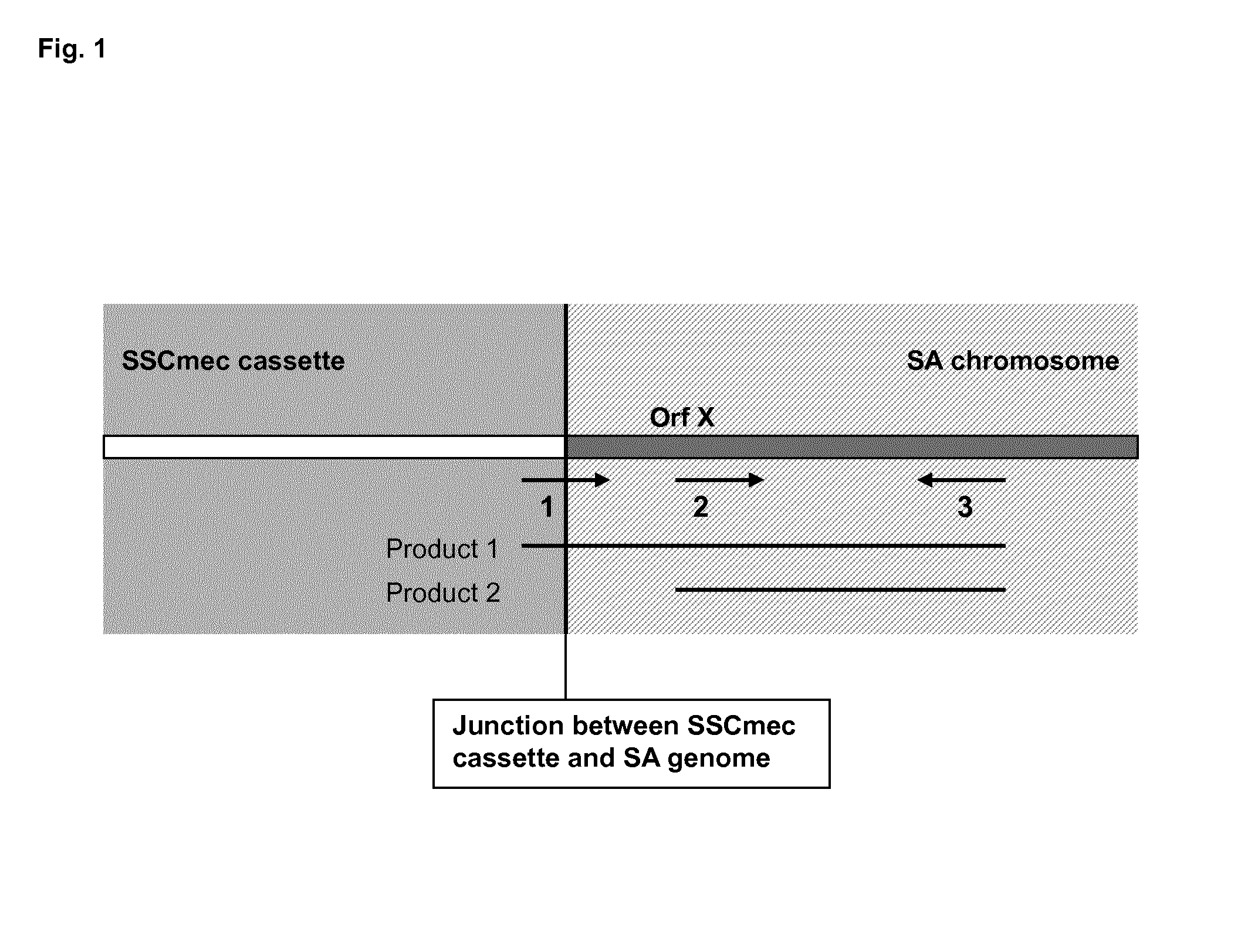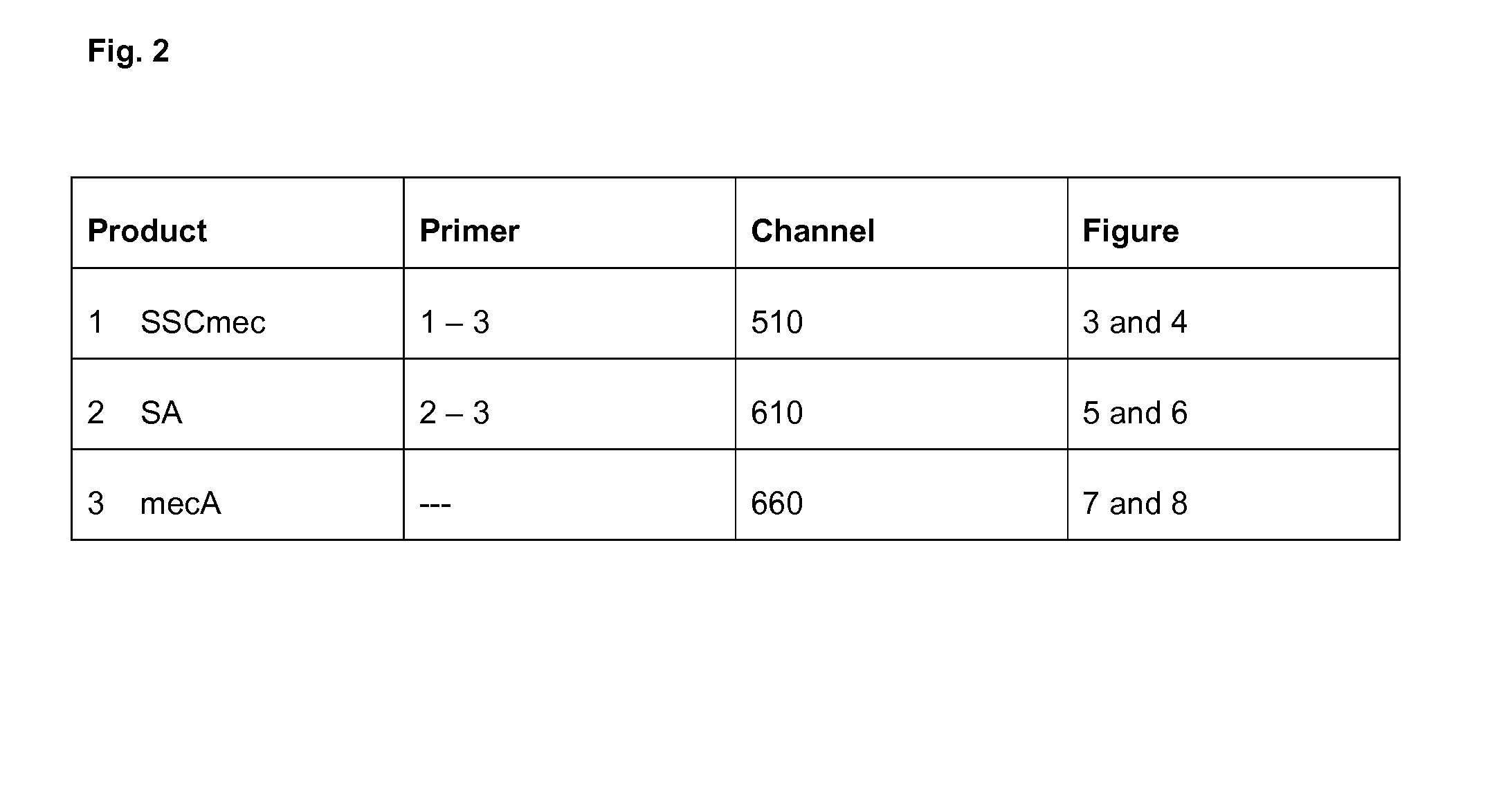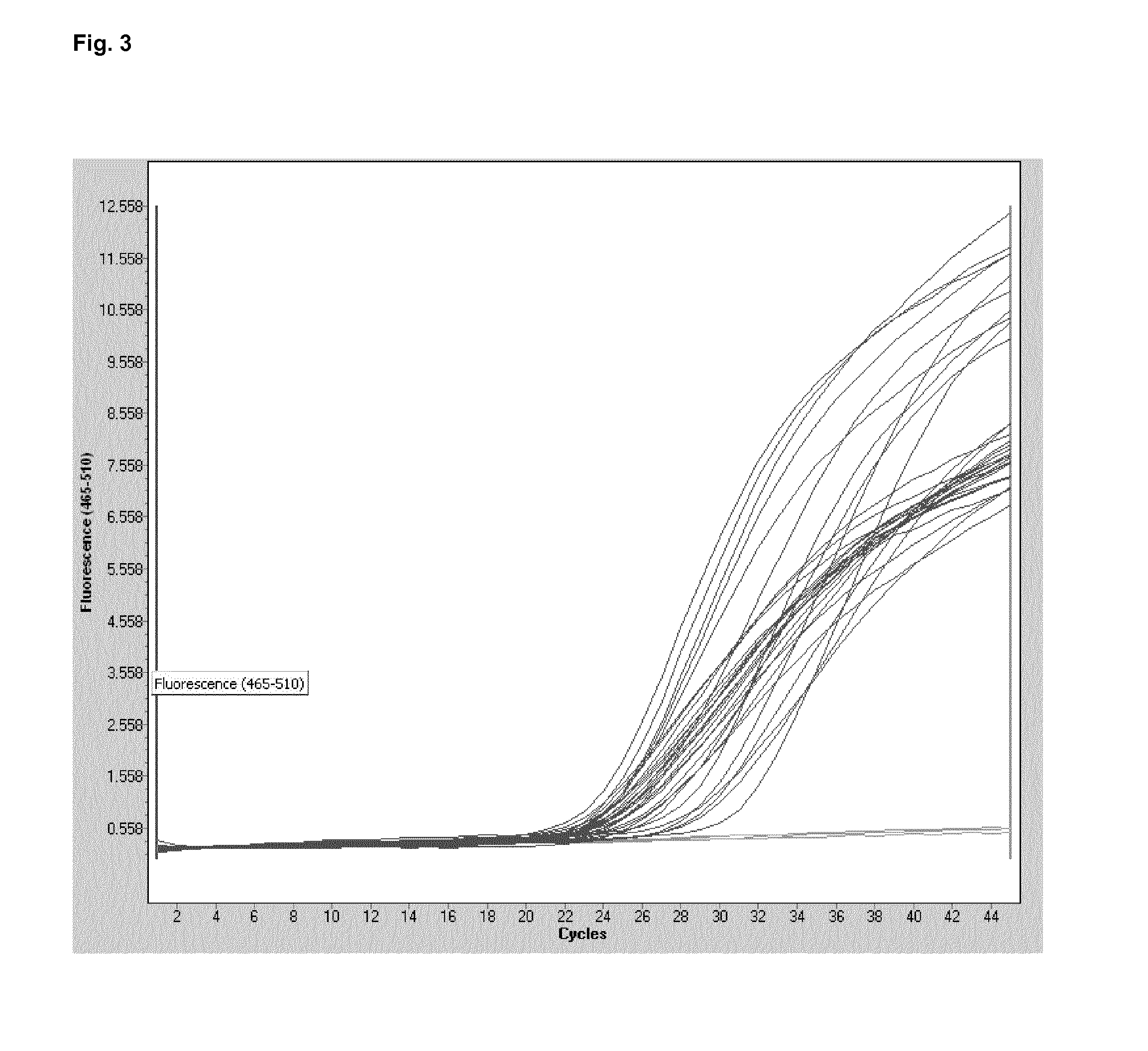Method for detecting a methicillin resistant coagulase positive staphylococcus aureus strain
a staphylococcus aureus and coagulase technology, applied in the field of methicillin resistant coagulase positive staphylococcus aureus detection, can solve the problems of insufficient individual detection of the sa genome and the detection of the meca gene, and the lethal effect of staphylococcus aureus /i>infections
- Summary
- Abstract
- Description
- Claims
- Application Information
AI Technical Summary
Benefits of technology
Problems solved by technology
Method used
Image
Examples
example 1
[0115]The detection reaction is carried out in a quadruplex Real-Time PCR (RT-PCR) system, comprising detection of the two reaction products, in addition to a mecA control amplification and an internal control amplification.
[0116]The junction-specific reaction (first forward primer and reverse primer (Product 1)) is measured in the 510-channel, the internal control measured in the 580-channel, the SA-detection reaction (second forward primer and reverse primer (Product 2)) measured in the 610-channel and the mecA detection measured in the 660-channel. Positive identification of methicillin resistant coagulase positive Staphylococcus aureus (SA) strains is obtained by positive PCR amplification in the 510, 610 and 660 channels.
[0117]In the example a multiplex-real-time PCR with known and unknown samples has been conducted with the LC 480. The three relevant channels are analyzed separately.
[0118]Practically, the conducted experiment consists of 2 runs. In the first run all samples an...
PUM
| Property | Measurement | Unit |
|---|---|---|
| Temperature | aaaaa | aaaaa |
| Fraction | aaaaa | aaaaa |
| Fraction | aaaaa | aaaaa |
Abstract
Description
Claims
Application Information
 Login to View More
Login to View More - R&D
- Intellectual Property
- Life Sciences
- Materials
- Tech Scout
- Unparalleled Data Quality
- Higher Quality Content
- 60% Fewer Hallucinations
Browse by: Latest US Patents, China's latest patents, Technical Efficacy Thesaurus, Application Domain, Technology Topic, Popular Technical Reports.
© 2025 PatSnap. All rights reserved.Legal|Privacy policy|Modern Slavery Act Transparency Statement|Sitemap|About US| Contact US: help@patsnap.com



